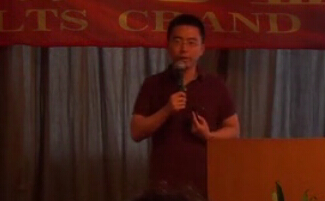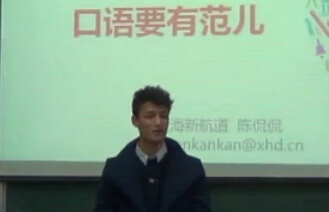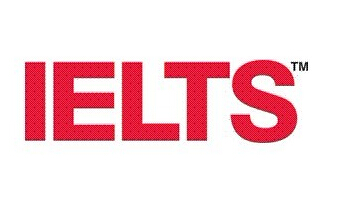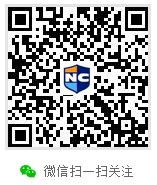雅思阅读真题之Solar-panel fold failure
2013-08-01 11:32 供稿单位: 新航道
出国英语考试有哪些 雅思6.5是什么水平 雅思阅读评分标准 托福阅读评分标准 雅思和托福的区别
Solar-panel fold failure may mean extra spacewalk
Fold failure
The retraction of a six-year-old solar array on the International Space Station (ISS) did not go to plan on Wednesday. Ground controllers left it only partly folded while they consider their options for getting the device pulled back fully. The problem may mean the crew of the space shuttle Discovery has to undertake a fourth spacewalk.
"We don't want to rush into a fix of a problem that just occurred," says John Curry, Discovery's lead flight director. As a result, Thursday's spacewalk to tackle other jobs will proceed as planned, without a fix to the solar array.
Beginning at 1328 EST (1128 GMT) on Wednesday, ground teams and the astronauts inside the ISS attempted to fold one side of the 35-metre (116 feet) P6 solar array back into a box on the top of the ISS. This needed to be done so a newer P4 solar array can freely rotate to track the Sun without colliding with its neighbouring array.
After almost 6.5 hours of trying to get the array to retract and more than 40 remote-control commands sent to the array, only 13 and a half of the array's 31 segments were safely folded in the box.
However, this had pulled the array far enough back so the two arrays will not hit one another when P4 rotates for the first time. There are five metres of space between the two arrays at their closest points. Nonetheless, NASA wants to get the P6 array fully retracted before they move it to another part of the station on a future mission.
Pile up
There were actually two separate problems ground controllers encountered during the retraction.
First, the array behaved rather like a map that does not fold back together neatly. Some of its sections did not slide properly into the box. When this happened, they stopped the retraction, pushed the array back out a little, and then tried to retract again.
Wednesday's showstopper was caused by one segment in particular, known as bay 17.5. It would not slide into the box, causing a pile up when subsequent segments started to roll over on top of one another. NASA tried to retract the array beyond this point four times without success.
Reconfiguration
A fourth spacewalk could add one day to the already busy mission. Shuttle and station managers are considering sending astronauts to positions at the base of P6 and somewhere down its length to help guide the array into the box.
NASA teams were meeting overnight to discuss the safety of such an operation. Astronauts Bob Curbeam and Christer Fuglesang would be the crew members asked to make the spacewalk.
The solar arrays on the P6 element of the ISS have been in space since 2000, and this was the first time they had been retracted in six years. When they were installed, they were put on "top" of the station.
The newer arrays, part of the P4 element, were installed in 2006 in their permanent position on the end of a long truss. The P6 element will eventually be moved outboard of P4 on the truss. The other side of the P6 solar array will be retracted on a shuttle mission in 2007 in advance of this move outboard, so managers are eager to learn the cause of the problem and how to prevent it in the future.
Solar flares
Despite the setback, astronauts Fuglesang and Curbeam will make their second spacewalk on Thursday, as planned. During their excursion, they will help rewire the ISS so that the station will have enough electrical power to add energy-intensive components, such as future laboratories.
Meanwhile, for the past two nights, flight surgeons have asked the crews to sleep in areas of the shuttle and station with additional shielding to protect them from increased solar activity and the possibility of extra radiation heading their way. The Sun released a large solar flare at 0240 GMT on Wednesday. Satellites were expected to show some minor problems, but the astronauts were not expected to be in any danger.
(690 words New Scientist.com news service Kelly Young)
副标题#e#
Questions 1-6 Do the following statements reflect the situation as described by the writer in Reading Passage 1?
In boxes 1-6 on your answer sheet write
TRUE if the statement is true
FALSE if the statement is false
NOT GIVEN if the information is not given in the passage
1. A spacewalk on Thursday will be made to repair the P6 solar array.
2. NASA tried to retract the P6 solar array by remote control on Wednesday.
3. The P6 array will be fully retracted from the space back to the earth.
4. Bay 17.5 is the segment of the P6 array which caused the fold failure by failing to slide into the box.
5. A fourth spacewalk will be aimed to guide the P6 solar array into the box.
6. NASA has found the cause of the retraction failure and knows how to prevent it.
7. The ISS at present is too short of electrical power to run laboratories.
Questions 8-9 Look at the box of names of the astronauts below.
Choose One or Two names to complete the following sentences.
Write your answers in boxes 8-9 on your answer sheet.
8. ……would be send to P6 to accomplish the retraction of one of its solar arrays.
9. ……is the lead flight director of Discovery, the space shuttle.
Question 10 Choose TWO correct letters A-D and Write them in box 10 on your answer sheet.
10. Astronauts in the ISS were asked to protect themselves from?
A. increased solar activity.
B. increased solar energy.
C. possible radiation.
D. danger caused by satellites.
Questions 11-14 Complete the notes below.
Choose one suitable number from Reading Passage 1 for each answer.
Write your answers in boxes 11-14 on your answer sheet.
The P6 solar array was installed……11……years ago. NASA decided to retract it in order that a newer P4 solar array installed in……12……can rotate to track the Sun without colliding with it. On Wednesday an attempt to retract the solar array partly failed owing to that only 13 and a half of the array's ……13…… segments were safely folded. Despite the failure, the array had been pulled back and the space between it and P4 at their closest points is ……14…… metres, which is far enough to avoid the collision between them.
副标题#e#
Key and Explanations:
1. FALSE See Paragraph 2 under the subtitle "Fold failure": Thursday's spacewalk to tackle other jobs will proceed as planned, without a fix to the solar array.
2. TRUE See Paragraph 4 under the subtitle "Fold failure": After almost 6.5 hours of trying to get the array to retract and more than 40 remote-control commands sent to the array……
3. FALSE See Paragraph 5 under the subtitle "Fold failure": NASA wants to get the P6 array fully retracted before they move it to another part of the station on a future mission.
4. TRUE See the third paragraph under the subtitle "Pile up": Wednesday's showstopper was caused by one segment in particular, known as bay 17.5. It would not slide into the box……
5. TRUE See the first paragraph under the subtitle “Reconfiguration”: A fourth spacewalk?sending astronauts?to help guide the array into the box.
6. FALSE See the fourth paragraph under the subtitle “Reconfiguration”: ……managers are eager to learn the cause of the problem and how to prevent it in the future.
7. NOT GIVEN See the first paragraph under the subtitle “Solar flares”: …they will help rewire the ISS so that the station will have enough electrical power to add energy-intensive components, such as future laboratories.
8. Christer Fuglesang and Bob Curbeam See the second paragraph under the subtitle “Reconfiguration”: Astronauts Bob Curbeam and Christer Fuglesang would be the crew members asked to make the spacewalk.
9. John Curry See Paragraph 2 under the subtitle“Fold failure”: says John Curry, Discovery's lead flight director.
10. A & C See the last paragraph: ……flight surgeons have asked the crews to sleep in areas of the shuttle and station with additional shielding to protect them from increased solar activity and the possibility of extra radiation heading their way.
11. 6 See Paragraph 1 under the subtitle “Fold failure”: The retraction of a six-year-old solar array on the International Space Station (ISS) did not go to plan on Wednesday.
12. 2006 See the third to the last paragraph: The newer arrays, part of the P4 element, were installed in 2006……
13. 31 See Paragraph 4 under the subtitle “Fold failure”: only 13 and a half of the array's 31 segments were safely folded in the box.
14. 5 See Paragraph 5 under the subtitle “Fold failure”: There are five metres of space between the two arrays at their closest points.
Notes:
1328EST: 美国东部时间13时28分。
1128GMT: 格林威治标准时间11时28分。
以上就是新航道雅思频道为大家整理的雅思阅读真题之Solar-panel fold failure,希望对大家有帮助,更多资讯、资料请访问新航雅思真题频道 https://www.xhd.cn/ielts/yucezhenti/

- 新航道,英语成功之道。时间获取新航道英语学习资料和新鲜资讯,请在微信公众账号中搜索「新航道英语」或者「xhdenglish」,或用手机扫描左方二维码,即可获得新航道每日精华内容推送和英语学习经验分享,并参与新航道举办的各项活动。
精彩专题
更多视频荟萃
更多
-
新航道姚骏鹏-雅思阅读高分攻略
时长:03-06

-
新航道陈侃侃-雅思口语要有范儿
时长:03-06

-
【3分钟学雅思】王大锤告诉你为啥药不能停
时长:01-12

-
【3分钟学雅思】全世界个感官餐厅
时长:01-12
热门文章
更多
-
8月31日雅思广州考机考初体验
选择机考模式的考生将通过机考模式参加听...








